- Home
- John Norman
Tribesmen of Gor coc-10 Page 3
Tribesmen of Gor coc-10 Read online
Page 3
“By noon,” said Ibn Saran, “the boy was found. Hearing the bells of a guard’s mount, he emerged from the shelter trench, and, attracting the man’s attention, was rescued. He was, of course, muchly beaten, for having left the caravan. The kaiila, of its own accord, returned later, for fodder.”
“What,” I asked, “was the story of the boy?”
“What, in pursuing the kaiila, he found,” said Ibn Saran. “On a rock there was scratched this message: Beware the steel tower.”
Samos looked at me. I made little sense of this.
“Near the rock, dead” said Ibn Saran, “blistered, blackened by the sun, dried, weighing no more than a child or woman, was a man. He had torn off his clothing and drunk sand.”
It would not have been a pleasant death. Doubtless he had died, mad, thinking he had found water.
“It, judging from discarded accouterments,” said Ibn Saran, “was a raider.”
“Was there no kaiila?” I asked.
“No,” said Ibn Saran.
“From how far had the man come?” I asked. How long had he been on the desert?”
“I do not know,” said Ibn Saran. “How well did he know the desert? How much water had he?”
The man might have come thousands of pasangs before the kaiila had died, or fled.
“How long had he been dead?” I asked.
Ibn Saran smiled thinly. “A month,” he said. “A year?”
In the desert decomposition proceeds with great slowness. Bodies, well preserved, had been found which had been slain more than a century before.
Skeletons, unless picked by birds or animals, are seldom found in the desert.
“Beware the steel tower,” I repeated.
“That was scratched on the rock,” said Ibn Saran.
“Was there any indication from which direction the man had come?” I asked.
“No,” said Ibn Saran.
“Beware the steel tower,” said Samos. I shrugged.
Samos rose to his feet and, touching twice the palm of the right hand of Ibn Saran, took his leave. I noted that Ibn Saran ate only with the right hand. This was the eating hand, and the scimitar hand. He would feed himself only with the hand which, wielding steel, could take blood.
The dancer whirled near us then enveloped me in her veil. Within the secrecy of the veil, binding us together, she moved her body slowly before me, lips parted, moaning. I took her in my arms. Her head was back, her eyes closed. I pressed my lips to hers, and with my teeth cut her lip. She, and I, together, tasted the blood and rouge of her subjugation. She drew back slightly, blood at the side of her mouth. Fist by fist, my hand on the back of her small, delicious neck, preventing her from escaping, I slowly removed her veil from her, then threw it aside. Then with my right hand, the Tuchuk quiva in it, while still holding her with my left, as she continued to move to the music, I, behind her back, cut the halter she wore from her. I then thrust her from me, before the tables, that she might better please the guests of Samos, first slaver of Port Kar. She looked at me reproachfully, but, seeing my eyes, turned frightened to the men, hands over her head, to please them. Never in all this, of course, had she lost the music in her body. The men cried out, pleased with her beauty.
“The message girl is ready,” said the man who wore the green of the physicians.
He turned to the man beside him; he dropped the shaving knife into the bowl, wiped his hands on a towel.
The girl, bound, knelt between the guards. There were tears in her eyes. Her head had been shaved, completely. She had no notion what had been written there.
Illiterate girls are chosen for such messages. Originally her head had been shaved, and the message tattooed into the scalp. Then, over months, her hair had been permitted to regrow. None but the girl would know she carried such a message, and she would not know what it might be. Even those for a fee delivering her to the house of Samos would have considered her only another wench, mere slave property.
I read the message. It said only “Beware Abdul.” We did not know from whence the message came, or who had sent it.
“Take the girl to the pens,” said Samos to the guards. “With needles remove the message from her scalp,”
The girl was jerked to her feet.
She looked at Samos. “Then,” said Samos, to the guards, “use her as a low work-slave in the pens primarily as a cleaning slave. A month before her hair is regrown, and she is fit for sale, wash her and put her in a stimulation cage and train her extensively.”
The girl looked at him, agonized.
“Then sell her,” said Samos.
A stimulation cage is an ornately barred, low-ceilinged cage; it is rather roomy, except for the low ceiling about five feet high. The girl cannot stand erect in it without her head inclined submissively. In such a cage, and in training, when not in such a cage, the girl who is housed in the stimulation cage is not permitted to look directly into the eyes of a male, even a male slave. This is designed, psychologically, to make the girl extremely conscious of males. When she is sold then only, if the master wishes, he may say to her, “You may look into the eyes of your master.” When she, frightened, tenderly, timidly lifts her eyes to him, if he should deign to smile upon her, the girl then, in gratitude and joy, at last permitted to relate to another human being, often falls to her knees before him, an adoring slave. When next she looks up, his eyes will be stern, and she will look down, quickly, frightened. “I will try to serve you well, Master,” she whispers. The accouterments of the stimulation-cell are also calculated with respect to their effect on the slave.
There are brushes, perfumes, cosmetics, slave jewelries, heavy necklaces, armlets, braclets and bangles; there is no clothing; there are also cushions, bowls of copper and lamp of brass. Importantly, there are also surfaces of various textures, a deep-piled rug, satins, silks, coarsely woven kaiila-hair cloths, brocades, rep-cloth, a tiled corner, a sleen pelt, cloths woven of strung beads, cloaks of leather, mats of reeds, etc. The point of this is that the senses and body of the slave, stripped save for brand and collar, and whatever perfumes, cosmetics or jewelries she may wear under the instruction of her trainer, are being taught to be alive, to sense and feel with great sensitivity; the senses and skins of many human beings, in effect, are dead, instead of being alert and alive to hundreds of subtle differences in, say, atmospheres, temperatures, humidities, surfaces, etc. A girl with living senses and a living body, of course is far more passionate than one whose senses and body sleep. The skin itself, in a trained girl, becomes an extensive, glorious, marvelously subtle sensory organ. Every bit of the slave, if she is well trained, is alive. This is done, of course, to make her more helpless under the touch of a master. When she does yield to the master, her guts half torn out with the love of him, then, of course, she is a more satisfactory slave. These indignities of course, are not inflicted on free women. They are permitted to go through life with their eyes half closed; so to speak. In this way they can maintain their self-respect. Sometimes inert, esteemed Gorean free women cry out in rage, not understanding why their companions have forsaken them for the evening, to go to the paga tavern; there, of course, for the price of a cup of paga, he can get his hands on a silken, belled girl, a slave; the free woman must denounce her companion, crying out, for his lusts; too busy for this, however, are the sweet, dark-eyed, sensuous sluts of the paga tavern; they do not have time to denounce the lusts of their master’s customers; they am too busy serving and satisfying them. The trainer directs the girl in the cage, or in the exercises, tending, observing, and prescribing, honing her with expertness into a delicious, responsive slave animal, the Gorean girl, collared, in bondage, trained to drive a man mad with desire, and then serve that desire, vulnerably, frequently and absolutely. The girl was thrust through the door, between the guards. I wondered what the trainer would prescribe for her. Girls differ, trainers differ. I glanced at the blondish girl, kneeling to one side, the former Miss Priscilla Blake-Alien. I, if her trainer, w
ould probably put her frequently, at least at first, and later for discipline, in a rope slave harness. After a night in such harness, her wrists braceleted behind her that she might not remove it, I expected Miss Blake-Allen would be suitably docile, and eager to attend to her lessons.
When the girl had been forced through the door leading to the pens, I turned to Samos.
“Who is Abdul?” I asked.
Samos, puzzled, looked at me.
“Who is Abdul?” I repeated.
“I do not know,” said Samos. He turned and went to his place behind the low table.
Those at the table paid us little attention. All eyes were on the dark-haired dancer, the skirt of diaphanous scarlet dancing silk low upon her hips. Her hands moved as though she might be, starved with desire, picking flowers from a wall in a garden. One saw almost the vines from which she plucked them, and how she held them to her lips, and, at times, seemed to press herself against the wall which confined her. Then she turned and, as though alone, danced her need before the men.
“There is much here that appears to make little sense,” said Samos. “Yet, there must be a meaning, a pattern” With an eating prong, of Turian design, Samos tapped the table before him. He looked at me. “Little has of late occurred in the Wars of Priest-Kings and Others.”
“Beware of a silent enemy,” I said.
Samos smiled. “True,” he said. Then he pointed the eating prong at the leather-harnessed American girl, on the tiles to our right, naked, two guards with spears at her side. The heavy butts of their spears rested, one to each side of her. Her fists were clenched in the leather, buckled cuffs of her harness, held to her thighs by the thigh straps. “We learn from this slave,” he said, indicating the former Miss Blake-Alien, “that, until further orders, slave runs from Earth to Gor have been cancelled.”
“Yes, “I said.
“Why?’ he asked.
“Have the runs actually been stopped?” I asked.
“Information from the Sardar,” said Samos, “suggests that they have. There has not been a detection, let alone a pursuit, in three weeks.”
The Gorean week consists of five days. Each month consists of five such weeks.
Following each month, of which there are twelve, separating them, is a five-day Passage Hand. The twelfth Passage Hand is followed by the Waiting Hand, a five-day period prior to the vernal equinox, which marks the Gorean New Year. It was currently in the late winter of Year 3 of the Sovereignty of the Council of Captains in Port Kar, the year 10,122 C.A., Contasta Ar, from the Founding of Ar I had, two months ago, returned from Torvaldsland, where I had attended to certain matters of the sword.
“Further,” said I, “into your keeping has come a captive beast, clearly a Kur.”
“It seems irrational,” said Samos. “Only a beast.”
“I think it is rational,” I said. “Its intelligence, I suspect, is the equal of ours, if not greater.”
Samos regarded me.
“It may not, of course, be able to articulate Gorean. Few of the Kurii can. It is extremely difficult for them to do so.”
“You understand the direction in which it was traveling?” asked Samos.
“Yes,” said I.
“Strange,” said Samos.
The beast had been taken southeast of Ar, while moving southeast. Such a Path would take it below the eastern foothills of the Voltai and to the south. It was incredible. “Who would enter such a place?” asked Samos.
“Caravans, crossing it,” I said. “Nomads, grazing their verr on the stubble of verr grass.”
“Who else?” asked Samos.
“The mad?” I smiled.
“Or the purposeful,” said Samos, someone who had business there, who knew what he was intending?”
“Perhaps, “I admitted.
“Someone who had a mission, who knew precisely for what he was searching?”
“But there is nothing there,” I said. “And only the mad, deeper into the area, depart from marked caravan routes, proceeding from oasis to oasis.”
“A tender of kaiila, a boy, lost from his camp,” said Samos, “found a rock. On this rock was inscribed “Beware the steel tower.’“ “And the message girl” I said. “We do not know, I gather, whom this Abdul is of whom we are warned to beware.”
“No,” said Samos, puzzled. “I know of no Abdul.”
“And who would send such a message, and why?”
“I do not know,” said Samos.
I idly observed the dancer. Her eyes were on me. It seemed, in her hands, she held ripe fruits for me, lush larma, fresh picked. Her wrists were close together, as though confined by the links of slave bracelets. She touched the imaginary larma to her body, caressing her swaying beauty with it, and then, eyes piteous, held her hands forth, as though begging me to accept the lush fruit. Men at the table clapped their hands on the wood, and looked at me.
Others smote their left shoulders. I smiled. On Gor, the female slave, desiring her master, yet sometimes fearing to speak to him, frightened that she may be struck has recourse upon occasion to certain devices, the meaning of which is generally established and culturally well understood. I shall mention two such devices. There is, first, the bondage knot. Most Gorean slave girls have long hair. The bondage knot is a simple looped knot tied in the girl’s hair and worn at the side of her right cheek or before her right shoulder. The girl approaches the master naked and kneels; the bondage knot soft, curled, fallen at the side of her right cheek or before her right shoulder. Another device, common in Port Kar, is for the girl to kneel before the master and put her head down and lift her arms, offering him fruit, usually a larma, or a yellow Gorean peach, ripe and fresh. These devices, incidentally, may be used even by a slave girl who hates her master but whose body, trained to love, cannot endure the absence of the masculine caress. Such girls, even with hatred, may offer the larma, furious with themselves, yet helpless, the captive of their slave needs, forced to beg on their knees for the touch of a harsh master, who revels in the, sport of their plight; does he satisfy them; if it is his will, yes; if it is not his will, no. They are slaves.
The girl now knelt before me, her body obedient still, trembling, throbbing, to the melodious, sensual command of the music.
I looked into the cupped hands, held toward me. They might have been linked in slave bracelets. They might have held lush larma. I reached across the table and took her in my arms and dragged her, turning her, and threw her on her back on the table before me. I lifted her to me, and thrust my lips to her, crushing her slave lips beneath mine. Her eyes shone. I held her from me. She lifted her lips to mine. I did not permit her to touch me. I jerked her to her feet and, half turning her, ripping her silk from her, hurled her to the map floor, where she half lay, half crouched one leg beneath her, looking at me, stripped save for her collar, the brand, the armlets, bells, the anklets, with fury. “Please us more,” I told her. Her eyes blazed. “And do not rise from the floor, Slave,” I told her. The music, which had stopped, began again.
She turned furiously, yet gracefully, extending a leg, touching an ankle, moving her hands up her leg, looking at me over her shoulder, and then rolled, and writhed, as though beneath the lash of masters.
“You discipline her well,” said Samos, smiling.
I grinned.
The girl now, on her belly, yet subtly to the music, crawled toward us, lifted her hand piteously to us.
I heard a cry of dismay, of protest, from the horrified, once Miss Blake-Allen.
Samos regarded her. He was not pleased. “Free her legs of the harness,” said Samos to one of the guards.
The guard took the straps which had bound her ankles together, and, untying them, slipped them through the metal ring, glinting, sewn into the back of the leather collar of the harness, worn over the simple curved collar of iron which marked her, even should she be clothed, and her brand not visible, as slave. The straps had run from the back of the collar to her ankles, holding her in a knee
ling position. Her legs were now free. The ankle straps then, sewn to the sides of the collar, and now circled about the collar and crossing in back, and now run through the ring on the front of the collar, served as leash. The harness is designed to provide a large number of ties. The girl, her legs freed, looked at Samos with horror. But he was no longer regarding her.
The dancer now lay on her back and the music was visible in her breathing, and in small movements of her head, and hands. Her hands were small and lovely.
She lay on the map floor, her head turned toward us. She was covered with sweat.
I snapped my fingers and her legs turned under her, and she was kneeling, head back, dark hair on the tiles. Her bands moved, delicate, lovely. Slowly, if permitted, she would rise to an erect kneeling position; her hands, as she lifted herself, extended toward us. Four times said I “No,” each time my command forcing her head back, her body bent, to the floor, and such time again, to the music, she lifted her body to an erect kneeling position. The last position of her body to rise was her beautiful head. The collar was at her throat. Her dark eyes, smoldering, vulnerable, reproachful, regarded me. Still did the move to the music, which had not yet released her.

 Avengers of Gor
Avengers of Gor Kajira of Gor coc-19
Kajira of Gor coc-19 Mercenaries of Gor coc-21
Mercenaries of Gor coc-21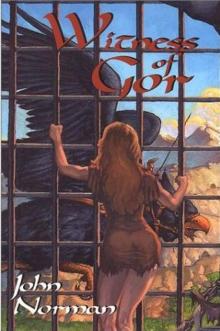 Witness of Gor coc-26
Witness of Gor coc-26 Witness of Gor
Witness of Gor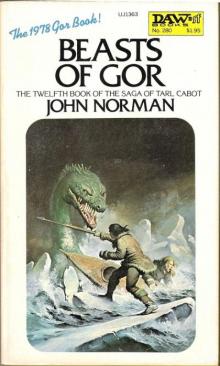 Beasts of Gor coc-12
Beasts of Gor coc-12 Rebels of Gor
Rebels of Gor Mariners of Gor cog[oc-30
Mariners of Gor cog[oc-30 The King th-3
The King th-3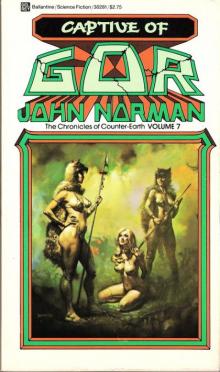 Captive of Gor coc-7
Captive of Gor coc-7 The Captain th-2
The Captain th-2 Vagabonds of Gor coc-24
Vagabonds of Gor coc-24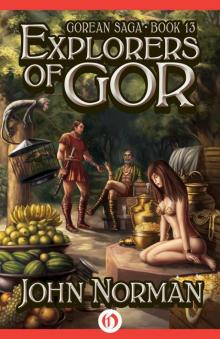 Explorers of Gor
Explorers of Gor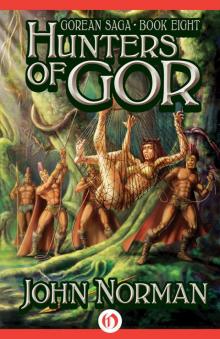 Hunters of Gor
Hunters of Gor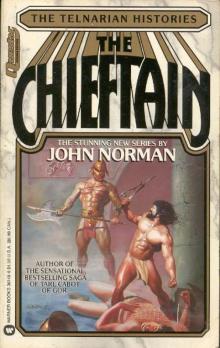 The Chieftan th-1
The Chieftan th-1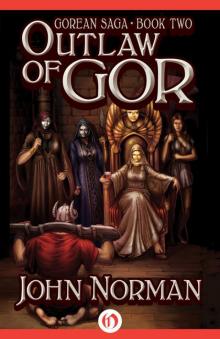 Outlaw of Gor
Outlaw of Gor Priest-Kings of Gor coc-3
Priest-Kings of Gor coc-3 Norman Invasions
Norman Invasions Marauders of Gor coc-9
Marauders of Gor coc-9 Kur of Gor coc-28
Kur of Gor coc-28 Time Slave
Time Slave The Chieftain
The Chieftain Kur of Gor
Kur of Gor Rogue of Gor
Rogue of Gor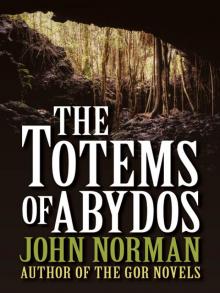 The Totems of Abydos
The Totems of Abydos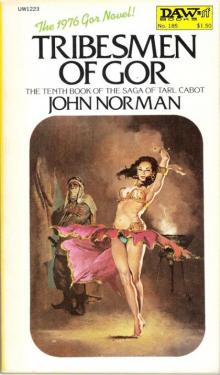 Tribesmen of Gor coc-10
Tribesmen of Gor coc-10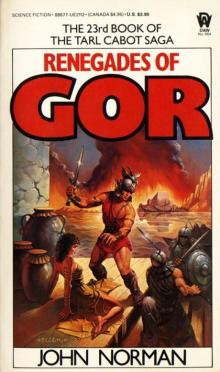 Renegades of Gor coc-23
Renegades of Gor coc-23 The King
The King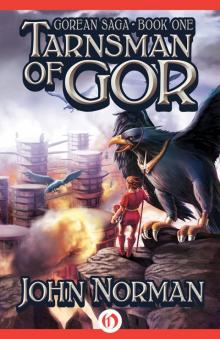 Tarnsman of Gor
Tarnsman of Gor The Usurper
The Usurper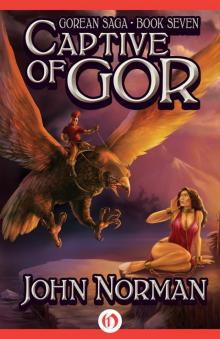 Captive of Gor
Captive of Gor Conspirators of Gor
Conspirators of Gor Smugglers of Gor
Smugglers of Gor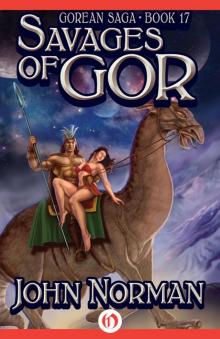 Savages of Gor
Savages of Gor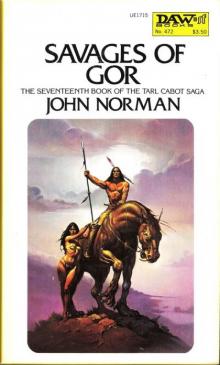 Savages of Gor coc-17
Savages of Gor coc-17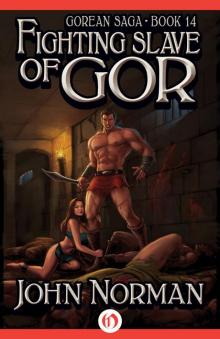 Fighting Slave of Gor
Fighting Slave of Gor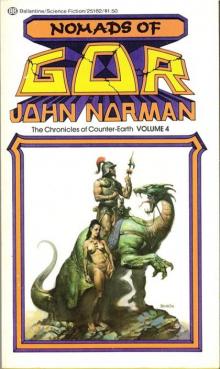 Nomads of Gor coc-4
Nomads of Gor coc-4 Fighting Slave of Gor coc-14
Fighting Slave of Gor coc-14 Swordsmen of Gor cog[oc-29
Swordsmen of Gor cog[oc-29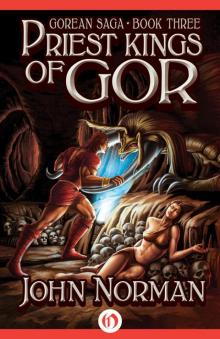 Priest-Kings of Gor
Priest-Kings of Gor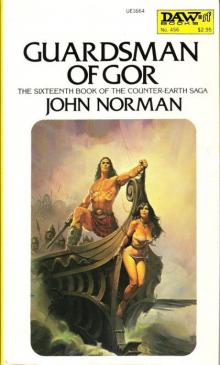 Guardsman of Gor coc-16
Guardsman of Gor coc-16 Hunters of Gor coc-8
Hunters of Gor coc-8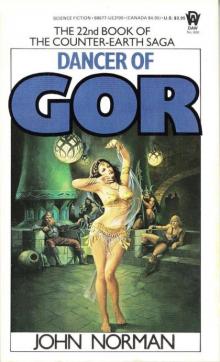 Dancer of Gor coc-22
Dancer of Gor coc-22 Prize of Gor coc-27
Prize of Gor coc-27 Conspirators of Gor cog[oc-31
Conspirators of Gor cog[oc-31 Slave Girl of Gor
Slave Girl of Gor Explorers of Gor coc-13
Explorers of Gor coc-13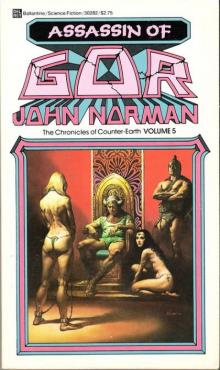 Assassin of Gor coc-5
Assassin of Gor coc-5 Raiders of Gor coc-6
Raiders of Gor coc-6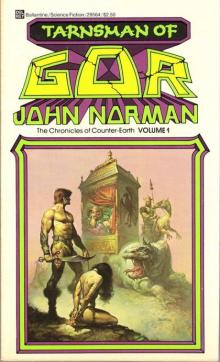 Tarnsman of Gor coc-1
Tarnsman of Gor coc-1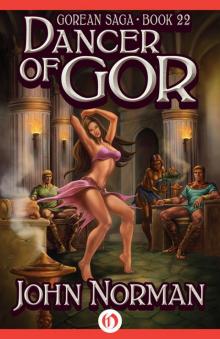 Dancer of Gor
Dancer of Gor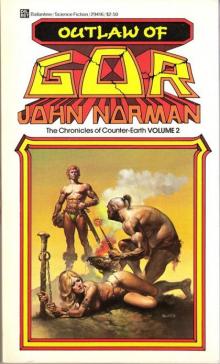 Outlaw of Gor coc-2
Outlaw of Gor coc-2 Guardsman of Gor
Guardsman of Gor Beasts of Gor
Beasts of Gor Ghost Dance
Ghost Dance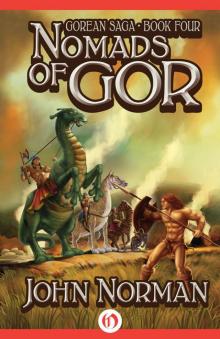 Nomads of Gor
Nomads of Gor Prize of Gor
Prize of Gor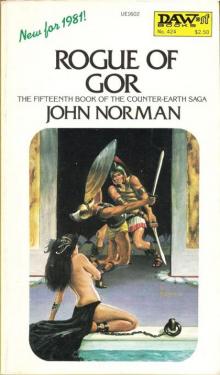 Rogue of Gor coc-15
Rogue of Gor coc-15 Swordsmen of Gor
Swordsmen of Gor